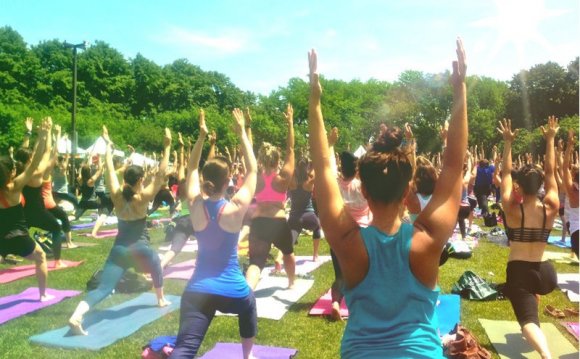
What is yoga?
The word yoga is derived from the Sanskrit root “yuj”, which means to join, union or yoke. In essence, yoga represents the unity of body, mind, and spirit through concentration and movement. The main goal of yoga is to quiet the mind and connect with the deep peace within. Yoga originated in India over 5, 000 years ago as one of six core components of Indian philosophy. About 2, 500 years later, a revered teacher Patanjali systemized yoga and comprised the Yoga Sutras, which consists of 196 brief lessons on yoga. The Yoga Sutras have been translated by many different authors since then, so a variety of commentaries on the Yoga Sutras are available. Some people wonder if yoga is a religion. It’s not. It’s a systematic approach to controlling the mind and keeping the body healthy. In its simplest form, yoga is a physical and mental practice which supports our natural desire to improve our well-being.
There are five main aspects of yoga.
• Hatha Yoga represents the physical poses we practice to keep the body strong and healthy.
• Raja Yoga represents the control of the mind we practice during meditation to reduce stress brought on by worried thoughts.
• Karma Yoga represents selfless action we practice when we volunteer our time and do not expect payment.
• Bhakti Yoga represents devotion to a higher power, or something greater than our individual selves, which we practice when we come together as a community for the highest good of all.
• Jnana Yoga represents the path of knowledge we practice when we learn more about ourselves through personal study. Practicing all of the aspects of yoga in a variety of ways, creates a healthy, balanced person.
Can you give me an example of yoga?
To demonstrate the subtle effects of yoga, try this `exercise.
1. Sitting in your chair, give yourself a good stretch. Raise the arms over head and stretch the upper body (yawning is encouraged). Now, stretch out the legs.
2. Take a moment to get comfortable. Sit up, elongate the spine and relax the shoulders down away from the ears.
3. Settle into the seat and softly close the eyes to draw the awareness inward.
4. Place a hand on the belly to help keep the awareness on the breath. Try to gently direct the breath into the belly so it expands on the inhalation and pulls in on the exhalation. Take slow deep breaths that do not feel forced or strained. Allow the inhalation and exhalation to be the same length ~ about 3 – 5 seconds each. Stay as relaxed as possible. Whenever the mind wanders off to the to do list ~ gently return the awareness back to the breath.
5. Try this for a couple of minutes, keeping the awareness on the breath. Try not to be frustrated with the fluid mind. Just return to the breath when the mind wanders off. Listen to your own inner wisdom and finish when you are ready to by slowly opening the eyes.
6. Notice how you feel. For some highly stressed people, this simple exercise can be very challenging. With patience and practice, it becomes easier and a welcome break during a hectic day.









